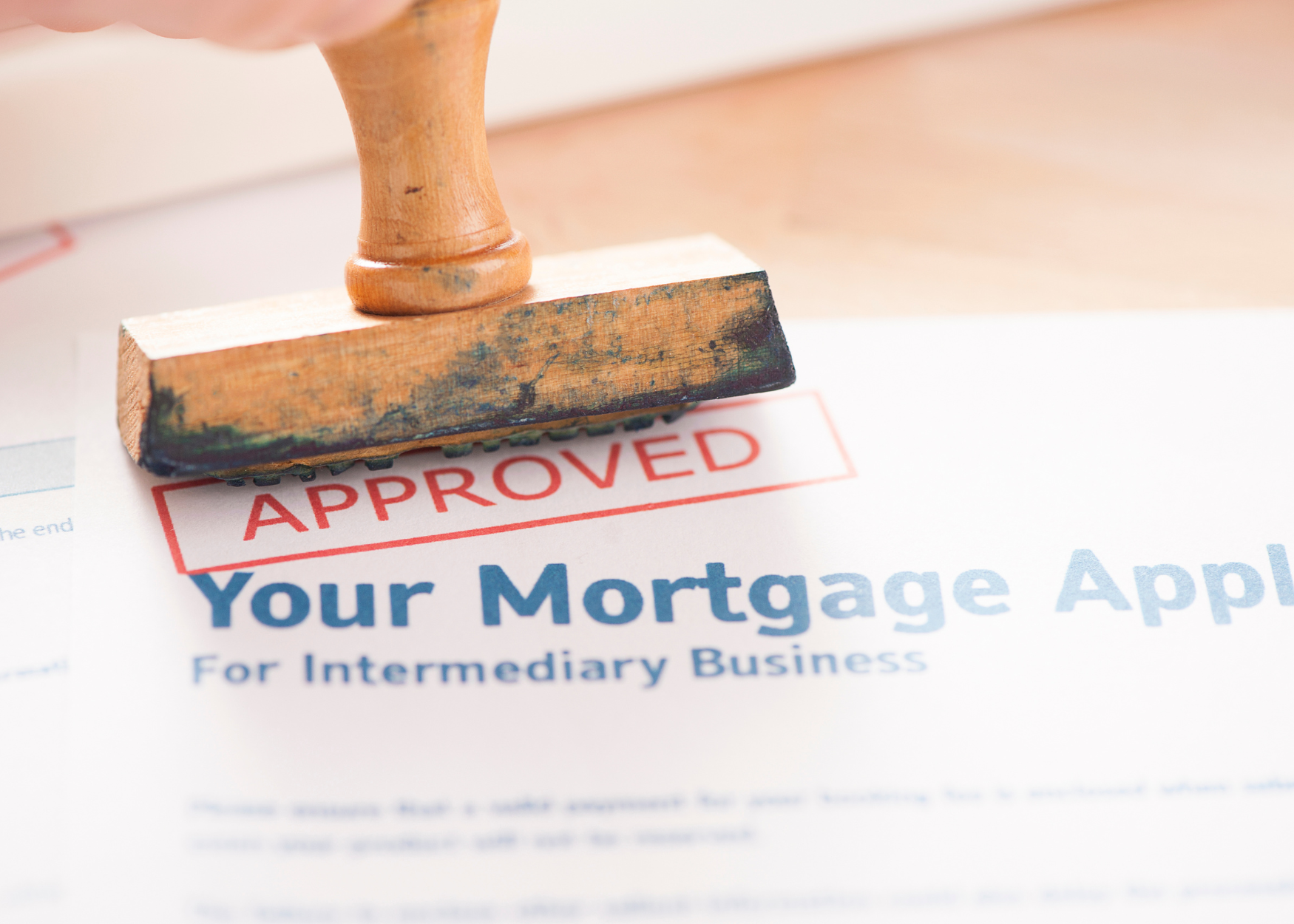Unveiling the Key Trends in the 2023 Cost vs. Value for Home Improvements

As a REALTOR®, it’s my responsibility to stay on top of the latest trends and developments in the housing market. Home improvements not only enhance the aesthetic appeal and functionality of a property but also significantly impact its overall value. In this blog post, we’ll delve into the key trends shaping the cost versus value equation for home improvements in 2023. Whether you’re a homeowner planning to sell or looking to add value to your property, these insights will be invaluable to you.
- Energy-Efficient Upgrades: A Wise Investment
The focus on energy efficiency continues to dominate the real estate landscape, and 2023 is no exception. Homebuyers are increasingly drawn to properties equipped with energy-efficient features that not only help reduce utility costs but also contribute to a greener environment. Investments in insulation, high-performance windows, energy-efficient appliances, and smart home technologies are likely to yield impressive returns by enhancing the overall value of a home.
- Outdoor Living Spaces: Extending the Boundaries
The pandemic has redefined our relationship with our living spaces, and homeowners are now seeking to optimize their outdoor areas. Whether it’s creating a cozy patio, installing a deck, or designing a lush garden, outdoor living spaces are becoming an integral part of a home’s value proposition. These extensions of the living space not only provide additional square footage but also enhance the appeal for potential buyers who value the opportunity to enjoy nature and entertain outdoors.
- Multi-Functional Spaces: The Demand for Flexibility
The concept of home offices gained tremendous momentum during the pandemic, and this trend has now evolved into a desire for multi-functional spaces. Homebuyers in 2023 are seeking properties with versatile rooms that can serve multiple purposes. Whether it’s a guest room that can double as a home gym or a living area that easily converts into a workspace, the ability to adapt spaces to changing needs is highly valued. As a homeowner, consider the possibilities of transforming your property to offer flexible living arrangements, thus boosting its overall value.
- Smart Home Integration: The Future of Convenience
The integration of smart home technology has transformed the way we live and interact with our homes. In 2023, homeowners are increasingly looking to incorporate smart features that enhance convenience, security, and energy efficiency. From automated lighting and thermostats to home security systems and voice-activated assistants, these technological advancements not only offer practical benefits but also elevate a property’s perceived value.
- Sustainable Materials and Design: Environmentally Conscious Choices
In recent years, there has been a growing awareness of the environmental impact of construction and design choices. Homeowners are now prioritizing sustainable materials and eco-friendly practices when undertaking home improvement projects. Incorporating recycled or reclaimed materials, opting for low VOC paints, and investing in renewable energy systems are all factors that resonate with environmentally conscious buyers. By making sustainable choices, homeowners can align their property with the values of the future, attracting potential buyers and enhancing their home’s desirability.
The 2023 cost versus value landscape for home improvements is marked by a focus on energy efficiency, outdoor living spaces, flexibility, smart home integration, and sustainable design. As a REALTOR, I encourage homeowners to consider these trends when planning their improvement projects. By making strategic choices and staying ahead of the curve, you can not only enhance your living space but also maximize the value of your property. Remember, the right improvements can make all the difference when it comes to attracting buyers and securing a strong return on investment in today’s dynamic real estate market.
For more specific breakdowns on individual projects, click here
Suzanne Volkman
REALTOR®
Coldwell Banker Realty
DRE#00702179
What’s the Difference Between Your Home’s Market and Assessed Value?

Understanding your home’s value is an important part of knowing your net worth, what you’ll likely receive if you sell the property and how the local real estate market is faring. Home value is also an integral part of determining how much property tax you’re required to pay the local and state government annually.
But depending on where you look, your home’s value may appear as wildly different numbers. Different valuations can mean different things and are often used for different reasons. The two types you’ll most likely encounter are market value and assessed value.
Here’s a quick explainer on market value vs assessed value:
- Market value is the estimated amount active buyers would currently be willing to pay for your home. Your home’s market value is determined by a real estate appraiser, who is typically hired when your lender is deciding how much money to provide in a loan or you are setting the list price when putting your home on the market.
- Assessed value, on the other hand, takes the market value and puts it in the context of your property taxes. In many counties throughout the U.S., assessed value is a portion of the market value, calculated as a percentage of the market value of the property. As a result, the assessed value of a property is typically lower than appraised market value.
Market Value
Danielle Hale, chief economist for real estate information company realtor.com, explains that market value is based on the expectation that the property would sell during the period the value is calculated.
“When people think about home values, they often mean, ‘This is the price that I could sell it for if I were to sell it today,’ or ‘This is the way a bank would value it if I were to go talk to the bank about getting a home equity loan or maybe refinancing my mortgage,’” she says.
The grayest area of market value is determining whether the value you assign to your home is based on what current market conditions say a person would pay for your house or what you think a person should pay for it.
For this reason, basing market value on recent sales of similar properties is key to ensuring the number is as accurate as possible. Professional appraisers are an instrumental part of being able to examine a property, nearby recent sales and the factors that may add to or detract from interest in a property, and then assigning a value to the house based on the information.
Appraisers are often hired by a mortgage lender, and it’s best if they are are local to the area so they understand nuances that may not be obvious to an out-of-towner, though sometimes an algorithm will be used to determine values on a larger scale or more quickly. A lender can have a property valuated to issue a mortgage for a home purchase, for refinancing or to issue a home equity loan.
Individual homeowners can also order their own appraisal to get a better understanding of their home’s current value if they’re considering selling but don’t know what the asking price should be, or simply to get a better grasp on their net worth. An appraisal typically costs between $313 and $422, according to home improvement network Angi, and is paid by the homeowner for personal use and the buyer for a lender-required appraisal.
Home Appraisals vs Home Value Estimators
An appraisal looks at the sale information of nearby homes with a similar square footage, age, number of bedrooms and other features of your property that have sold recently – most often in the last six months. Appraisers will also factor in major differences that may make your home’s valuation different.
Because the market determines the value, it’s easier to pinpoint a more accurate value for homes that are similar to many in the neighborhood than for houses that are unique. A three-bedroom house in a neighborhood of matching three-bedroom houses is relatively easy to appraise, but a Victorian home on a busy street surrounded by condos and apartment buildings will be more difficult to valuate.
Hale says online tools serve as a great jumping-off point, but they fail to take into account current and local events that may play a more immediate factor into buyer interest and the ultimate value. “Market conditions can affect that valuation,” Hale says.
Assessed Value
Market value even becomes part of the calculation of your home’s assessed value. But because assessed value is used for the sake of calculating how much you owe in property taxes, the assessed value is also based on laws of your state, county and even city, explains Margie Cusack, research manager for the International Association of Assessing Officers.
“The assessed value will be defined by the legal framework of that jurisdiction,” she says. “A lot of states have value limitations in law, so they might have a market value for the property. But then they have a per law allowable assessed value that they work off of, so it becomes very localized.”
Because of the specificity of assessed value to your exact location, Cusack recommends all homeowners – as well as homebuyers who don’t yet pay property taxes – become well-versed in the statutes that apply to the area, how the assessment is calculated and where your property taxes go.
“You really need to read your assessment notice,” she says. “Usually that will define what assessed value means for that property.”
The exact steps to assessing a property also vary by jurisdiction. Some assessor’s offices will use a predictive algorithm to help determine assessed values for more properties quickly, while others will address assessments on an individual, in-person basis, Cusack says.
What if You Disagree With Your Home’s Appraised or Assessed Value?
At times, homeowners will disagree with the appraised or assessed value assigned to their property. In both scenarios, there are options for contesting the valuation.
For market value, a homeowner or buyer may be able to request a property be appraised a second time with new information the appraiser may not have been aware of before – a finished basement, for instance, can change the value of a home if it can be counted in the square footage. An appraiser may be willing to take a second look at the property without extra charge if something was missed, but you may also need to pay for another complete appraisal to have your house fully reevaluated.
When it’s a lender issuing the appraisal and considering the value, however, there’s not much chance you’ll be able to convince the lender to change his or her mind on issuing a loan or refinance.
For assessed value, many assessor’s offices have contact information listed and occasionally host public forums to discuss individual issues with property value information. Like the calculation of assessed value itself, the process for petitioning a reassessment varies widely between states and counties, so it’s best to explore your local assessor’s office website for information on discussing the matter.
https://realestate.usnews.com/real-estate/articles/whats-the-difference-between-your-homes-market-and-assessed-value
Five Ways to Build Home Equity

Whether you currently own a home or are thinking of purchasing one, you may be looking for ways to build equity. Home equity is the overall difference between the amount you owe on your mortgage loan and your home’s market value. Home equity can be used to take out a loan, invest, build long term wealth or sell your home for more than you owe and keep the profit.
The equity you have access to will increase as you make payments that pay off your mortgage balance. It can also grow when your home’s value increases. The following details five of the quickest ways to build home equity.
1. Make a Larger Down Payment
The simplest and quickest way to build equity in a home is to make a large down payment when you first buy the property. The down payment you make is immediate equity. Let’s say that you’re buying a home for $200,000. With a $10,000 down payment, you’ll owe $190,000 on the mortgage and have $10,000 in equity.
If you can afford it, you could instead choose to make a down payment of $40,000, which means that you would owe $160,000 on the mortgage and have $40,000 in equity when you first move in. Keep in mind that a 20% down payment will also remove the private mortgage insurance requirements for conventional loans, which is an added benefit.
2. Make Mortgage Payments More Often
Only a percentage of the mortgage payment you make each month is put towards the principal of your house. The remainder of the payment goes towards interest and taxes. When you make additional payments or provide a payment that’s higher than the minimum amount, you are putting more money toward the principal and increasing your equity.
3. Consider a 15-year Mortgage
If you take out a 15-year mortgage as opposed to a 30-year one, your monthly mortgage payments will be significantly larger. When you take this approach, you’ll be paying off more of the principal each month, which will help you build equity quicker. You’ll also pay less interest over the course of the loan.
If you’ve already purchased your home, you could decide to refinance the mortgage loan, which would allow you to switch from a 30-year loan to a 15-year option and build equity faster. Make sure that you can afford the higher monthly payments before choosing this solution, and make sure you take current interest rates into account as well.
4. Invest in Home Improvement and Remodeling Projects
You can also build equity in your home by investing in home improvement and remodeling projects that will increase the home’s value. The most popular renovations include kitchen and bathroom remodels. Make sure that you select projects that will get you the best return-on-investment (ROI). Reach out if you want to discuss projects with the highest ROI in our area.
5. Use Gifts and Windfalls
Consider building equity by using any gifts or windfalls you receive to pay down the balance of the loan. Do you receive birthday or holiday gift cards? If so, these can be converted to cash and added to your mortgage payment. The same is true of any inheritance you receive.
Building home equity gives you financial security and allows you to prepare for your future. By making a large down payment, paying more money each month, and improving the quality of your home, you can build equity relatively quickly.
Tips for a Successful Yard Sale

Yard sales are a great way to convert items that you hardly ever use into cash that can be saved, donated, or put towards a large purchase. However, a successful yard sale takes a considerable amount of preparation and planning. Here are some tips on how to hold a great yard sale.
Set a Goal
First, it’s a good idea to think about why you want to hold a yard sale. Are you hoping to generate income or use the sale to get rid of items you’re no longer using? Having a goal in mind can help you decide what to sell, how to price your items, and how flexible you want to be with hagglers.
Choose the Right Date
The best days to host a yard sale are usually Friday and Saturday. Consider the first Friday or Saturday of the month, after most people receive their paychecks and have more money to spend. Try to pick a date and time when you expect the weather to be mild and dry. You can’t predict or control the weather, but you can do a little internet research to see which weekends have had the best weather historically.
Price Out Items as You Gather Them
To avoid rushing, don’t price everything on the day before the sale. As you are collecting items to sell, you can create a comprehensive price list or go ahead and label each item with a price sticker. When pricing each item, think like your customers. They want every item to be at a steep discount.
Properly Advertise Your Yard Sale
Hang flyers and post online ads about the sale a couple weeks before it begins. You should also inform the people you know on social media a few days before the sale. Highlight any sought-after items that will be available in your sale, which can include furniture, specialty tools, collectibles, and toys. Make sure that you include the date and time of the sale as well as your full address.
Complete Preparations Early
In the week preceding the sale, gather as many tables as possible. If your friends or family can lend you a table, call them to ask well ahead of time. You should also have a cash box on hand with a wide variety of bills. Some additional items you may need include:
- Batteries
- Extension cords
- Light bulbs
- Calculator
- Chairs
- Cooler with drinks
- Hand sanitizer
- Pens
- Receipt book
- Sold tags
- Paper or plastic bags
Make Sure All Items are in Good Condition
Every item you’re selling should be in good, usable condition. Make sure that you include working batteries in electronic devices and pump air into any basketballs or soccer balls. Have someone on hand during the day to rearrange items and fold clothing so everything looks tidy and well cared for.
As long as you choose the right date, properly advertise the sale, and prepare for the event, you should avoid most of the problems that can occur when hosting a yard sale.
State Farm, Allstate stop selling home insurance to new customers in CA

State Farm and Allstate have announced they will no longer sell new home insurance policies in California because of wildfire risks and an increase in construction costs. Here are some facts:
- State Farm and Allstate are not leaving the California Insurance Market: State Farm and Allstate will continue to service and renew policies of existing clients in the state and will continue to offer new auto insurance policies. However, they will not be issuing any new property insurance policies for the time being in California.
- What are the implications of the decision for prospective homebuyers? In certain high-risk areas of the state, there are very few insurance companies willing to write new policies. In some higher risk areas, State Farm was the last private insurance company writing policies. In those areas, unless the Insurance Commissioner is successful in its effort to get more private insurers to write policies in such areas, the generally more-costly California FAIR plan may end up being the only property insurance available.
- Why did State Farm and Allstate stop issuing new policies? State Farm stated that it made the decision “due to historic increases in construction costs outpacing inflation, rapidly growing catastrophe exposure, and a challenging reinsurance market.” Allstate said the company “paused” its offerings “so they can continue to protect current customers.” State Farm and Allstate’s decision is not necessarily an indication of what other companies will do.
- Will more companies follow State Farm and Allstate’s move? There are still a wide range of companies writing policies in California. However, those willing to write new policies in higher risk areas in particular are declining and as stated above, with the departure of State Farm and Allstate, those in more high-risk areas may have no option than the FAIR plan.
- What are the main problems for the insurance market in California? The California market is heavily regulated and has various strict requirements for rate increases, which were put into place by Proposition 103 in 1988. However, there are two areas where possible changes could result in a better climate for insurance without requiring major changes to consumer-friendly rate increase requirements. Those include allowing insurance companies to have rates that better reflect their reinsurance costs and allowing insurance companies to utilize forward looking risk models. Current law only allows companies to look back when setting rates. However, given the issues with climate change, many insurance companies argue that looking backward does not allow companies to adequately capture risk.
- Where can I direct my clients for information if they are looking for homeowners insurance? The California Dept. of Insurance provides several information guides, tips and tools to help them understand home/residential insurance so that they can make the best decision for their situation. They can also call the California Dept. of Insurance Consumer Hotline for assistance.
- What is C.A.R. doing? C.A.R. has been in discussions with both the Insurance Industry representatives and the Department of Insurance on State Farm and Allstate’s move and other homeowner insurance issues. The Insurance Industry and the Department of Insurance have also been looking at and discussing ways to address the state’s insurance challenges. The issue is large and complicated. We have cautious hope that these moves may create some greater urgency on how to address this insurance situation.
June 1, 2023
https://www.car.org/aboutus/mediacenter/news/statefarm
Homeownership as a Vehicle to Build Wealth

Over the last decade, the median-priced home in the U.S. gained $190,000 in value, making the typical homeowner 40 times wealthier than if they had remained a renter, according to a new report.
Low-income homeowners (those earning no greater than 80% of the area median income) built $98,900 in wealth as their homes while middle-income (those making more than 80% but less than 200% of median area income) and upper income (those earning more than 200% of median area income) homeowners accumulated $122,100 and $150,800 in wealth respectively, according to a report released Tuesday by the National Association of Realtors.
“Over a long time of period, home ownership is a solid path towards building wealth,” says Lawrence Yun, chief economist for National Association of Realtors told USA TODAY. “It works in two ways: first you have the advantage of home price appreciation and second, it forces homeowners to save for monthly mortgage payments which renters don’t have.”
To dive into where homeowners built the most wealth, there’s a handy chart with the story.


 Facebook
Facebook
 X
X
 Pinterest
Pinterest
 Copy Link
Copy Link



